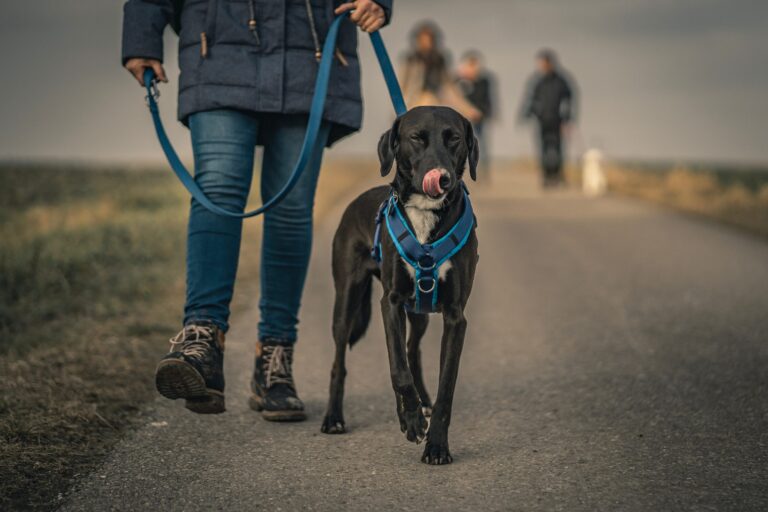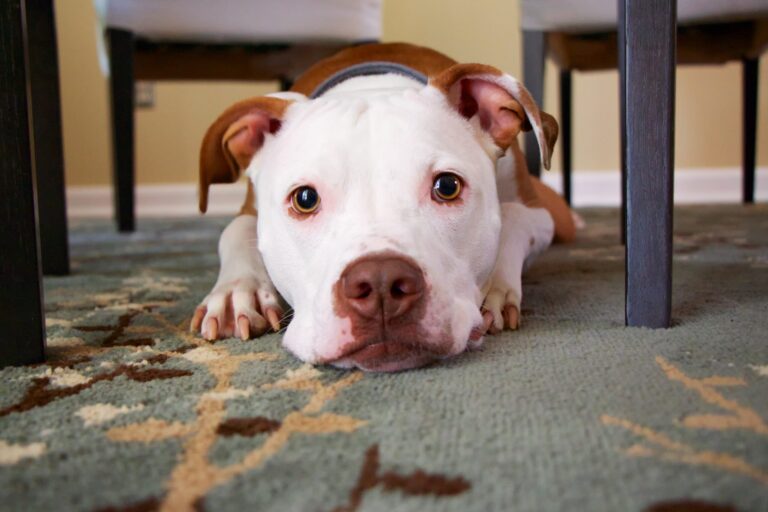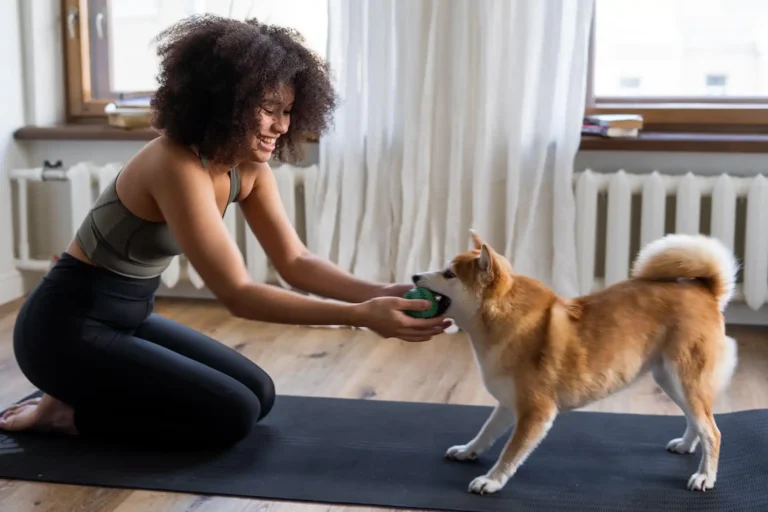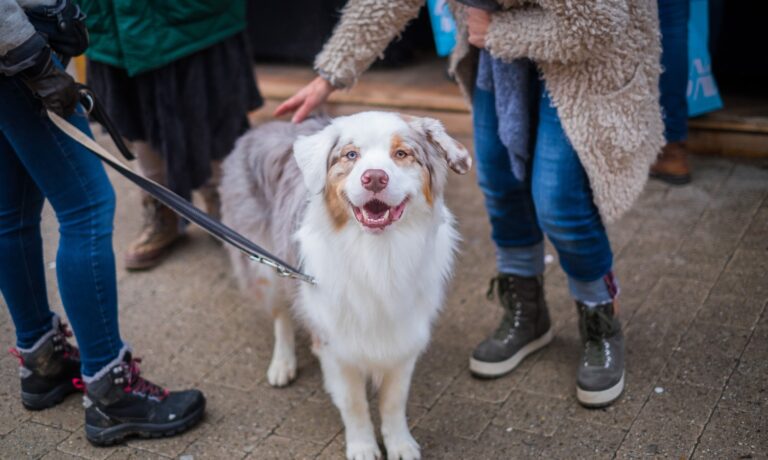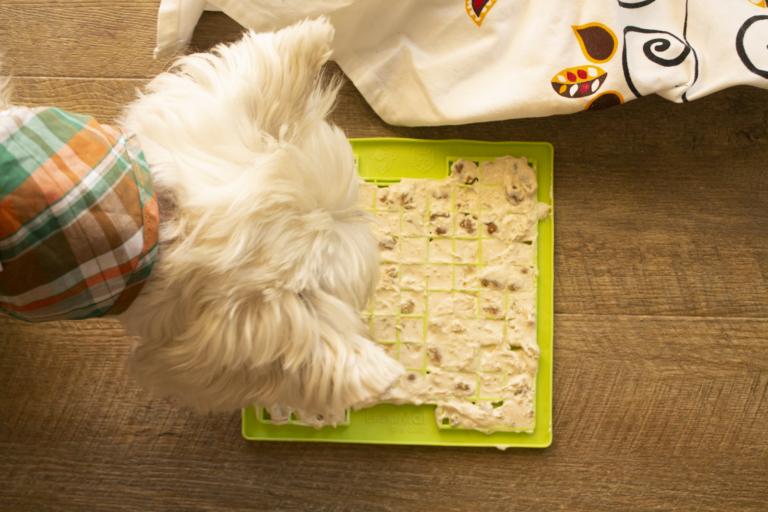Tips on Running With Your Dog
Running with your dog is a fun activity to do together, potentially improving your bond together. Dogs are great pace setters, however, running with your dog is not without its risks, behaviourally or physically.
Free ranging dogs don’t run very often, opting to amble and trot when moving from A to B (usually foraging/scavenging). Whilst some of our domestic dogs have been bred to do active work, we need to bear in mind that the dog as a species is not really designed for frequent, high intensity exercise.
We need to regulate how much they do, and how intensely they do it in order to keep them healthy and behaviour problem free.
THE RIGHT AGE TO START
The last weight bearing bone in the body fuses around 14-16 months of age and it is for this reason dogs should not be taken running before this age, and that their first runs should be done with this being taken into consideration.
INTRODUCING THEM TO RUNNING
My young Border Collie, Mohawk, was 14 months old when we started to take him running. His first run was just shy of 3 kilometres, with a warm up and few breaks for him to cool down.
Young, male dogs are at higher risk of heat stroke, so it’s important to introduce them to aerobic exercise carefully and to monitor their body temperature (intensity of panting and rate of respiration). If their tongue is excessively long- it’s a good idea to have a break.
I opted to free-run (off lead) so he could choose his gait, move more freely and stop and sniff more.
If you’re going to run your dog on lead, the lead should be totally loose at all times and you shouldn’t be pulling them. For young dogs, starting on lead may contribute to biting the leash.
BUILDING UP DISTANCES
Exercise needs to be carefully built up! Mohawk is an active dog so is already fit, but running at our pace may inhibit self-regulation (sniffing, checking in, slowing down).
As mentioned, we started with 3k for his first run. Next was a hilly 4K so he got lots of opportunity to slow down when I had to walk some of the uphill.
He is now on 5-6k and we will be keeping him on this distance for a month or two before bringing him up to 10-12 kilometres. As we are trail runners, all our routes involve steep hills, so he gets lots of opportunity to slow down.
MEETING THEIR NEEDS
Ensure your dog has some energy in the tank before their run. The GoFuel energy bar is perfect for giving dogs the energy they need for a run. Just be mindful to give them 45 minutes to digest this before starting your run.
Before we set off the dogs are given the opportunity to sniff, wee and poo and warm those muscles up for a few minutes.
We also give them a few minutes to slow and wind down before we load them in the car.
We try to include water in our routes for them to hydrate and paddle to cool down. On our walks I work on my dogs being sent to water on cue and recalling away from it (even after I’ve cued them to go to it!) just in case there was a reason it wasn’t safe, such as blue green algae or a dog needing space having its own paddle and refreshment.
Be mindful of temperature- dogs struggle to cool down as they cannot sweat. In the warmer months run earlier in the day or later in the evening, include water in your dog’s route and run in the shade.
I do not run my dogs over 20 degrees.
EQUIPMENT
I free run my dogs so any equipment doesn’t affect their gait.
If you’re going to run with your dog on lead- ensure the lead is clipped to a comfortable harness so not to cause them to run in an imbalanced fashion (which is often the case when they are run with a lead attached to a collar).
I unfortunately rarely see dogs running on a loose lead. High impact/high intensity exercise on a tight leash attached to a collar is a big no-no! Not only does it affect gait, but it may also cause repeated pressure or impact on their neck (where the thyroid gland, optic nerve, jugular, oesophagus, trachea etc all are- so lots of delicate things vulnerable to damage).
The Canicross harnesses are recommended for on-lead running dogs as they are designed for the dog running ahead of the owner. If you are road running your dog, they should be running on a loose lead next to you.
My dogs wear Haqihana harnesses for walking and running as they are mostly off lead, these are available online: https://themuttyprofessor.co.uk/product/haqihana-harness/
TERRAIN
We trail run with our dogs, so they mostly run on soft ground which is better for their joints.
Road running is harsh on my joints, which can be eased by wearing road running shoes. Dogs don’t get a choice of footwear (I’m not convinced dog boots don’t alter gait!).
If you’re going to road run your dog, try and keep them in a trotting gait rather than a canter- which is higher impact.
SOCIAL ETIQUETTE
We either give other dogs a wide berth or slow right down to pass in more narrow spaces- but overall try and avoid narrow paths. If we are coming up from behind, I talk to my dogs or call out to say ‘hello’ to make our presence known- so we don’t startle the other dog (I do this with people also).
The other day we turned round on a woodland walk to see a runner and spaniel a couple of metres behind moving through the middle of my group of dogs! This startled my dogs and resulted in Kanita doing a little defensive charge (nothing major, but easily avoided by alerting others to you approaching from behind at speed!).
Remember- many dogs perceive another running in their direction as a potential threat. Don’t accidentally force your dog into a challenging situation. Help them stay polite and pass dogs at a sensible distance and speed, or give them time to interact if the other dog approaches them.
I observe other dogs from afar and read their body language, looking for signs they are anxious and need a wider berth. We slow to a walk for dogs that cannot be avoided as well as for Mohawk who is learning to curve wide past other dogs on his runs so to not upset them. Running him right at a dog may cause them to react at him.
I also look for dogs who may rush over to mine- triggered by my dogs running they may want to play chase! I try to avoid these dogs so not to put my dogs in a challenging situation when their adrenalin levels are extra high, which may set them up to react.
If I get caught out and a dog has rushed over, I slow immediately down to a stand/walk to monitor things closely (unless both dogs seem super relaxed with the situation and are running together).
If you want to maintain the pace- take your dog on routes where giving a wide berth and keeping yourselves to yourselves is always an option.
It’s horrid to see dogs struggling to keep up, sometimes because they’re in pain or unfit….or other times being left to navigate passing dogs unsupported (most sensible dogs will understand there is a risk in running at and by other dogs and will slow or veer around to stay safe). Too often I see these dogs looking anxious and conflicted- wanting to keep up with their owners but not trigger a charge from dogs by rushing past them.
CONTROLLING YOUR DOG
I often see dogs pooing while their owner is running ahead with their head down, totally unaware. So often this is at the start of the run/walk by the car park- which is really where most owners should expect their dog to toilet! I keep my eyes on my dogs so I can spot them pooing easily. If they get too far behind, I will slow to let them catch up.
Having a good recall is crucial to running with your dogs, so you can call them away from others (people, dogs, cyclists etc) so they don’t trip up or startle them! I encourage my dogs to come close to me as we pass anyone but also to slow or stop on cue.
If free running your dog, consideration needs to be given to livestock, especially if your dog has a big range or is a hunting breed. We opt to run our dogs well away from livestock. Your dog should stay in your sight at all times if off lead.
FREQUENCY
I tend to run just once a week with my dogs, twice max with 3-4 days in between. Since finishing his run by approximately 12 noon, Mohawk will be rested until the next day- allowing his muscles and physiology time to wind down.
I want the majority of his walks to be dog-led exercise and about interacting with the environment- not rushing around at speed.
DON’T FORCE THEM
If my dogs don’t like it, they don’t get taken running. Kanita hates running, so she doesn’t go!
Signs that your dog doesn’t like going running is not keeping up, and that may be because they are in pain or they simply don’t like it.
Be critical of the breed/type you have! Are they really suited to running longer distances without stopping? Short legs, long backs or heavy-set breeds may not be physically capable of running for this duration.
AGING /PAIN
Sadly, at 12.5 years old Roo is now too old to run. He absolutely loves it and I haven’t yet told him that he’s retired from running. If he seems particularly spritely one day, I may take him on a very short one!
I monitor my dogs carefully for signs of pain. Any gait abnormalities and they don’t come running! Adrenalin Cortisol and the pressure to keep up with their owners will make dogs continue despite pain.
My dogs also get routine physio therapy with a qualified professional and supplements. The GoActive chewies will help protect your dog’s joints and muscles.
BE AN ADVOCATE FOR YOUR DOG
When running with dogs your focus should divert away from aiming for personal bests or Strava achievements! Sometimes dogs will help you run at your best, but you also need to be prepared to slow down to keep them and others safe and happy.

